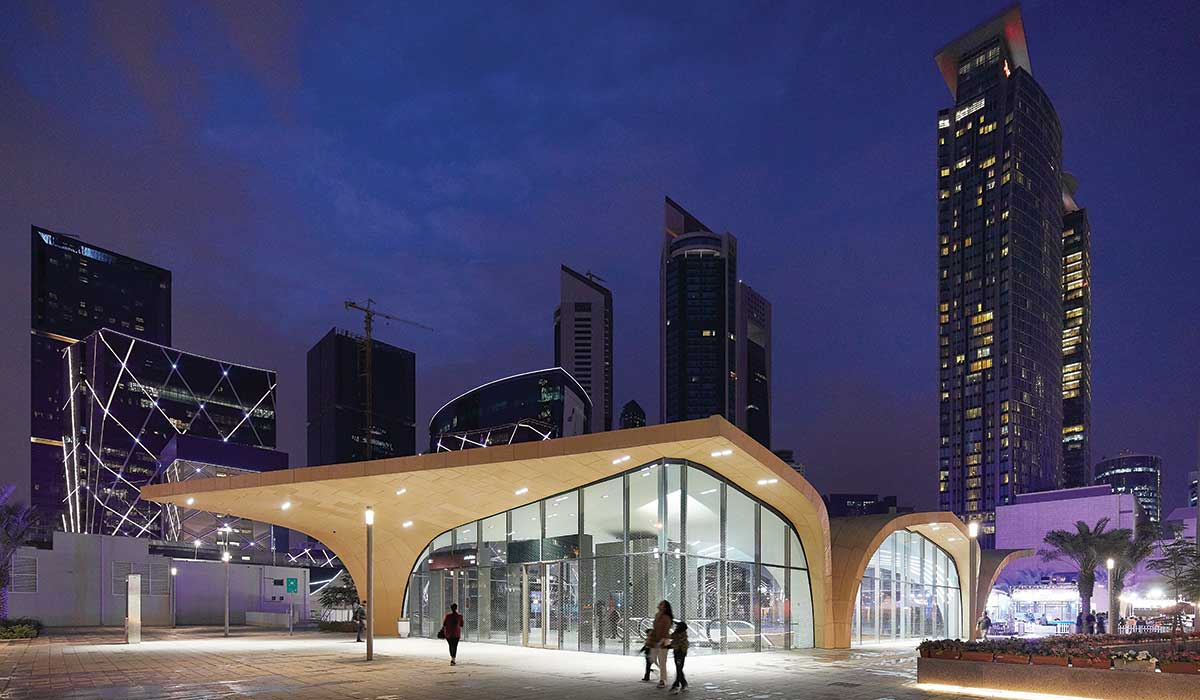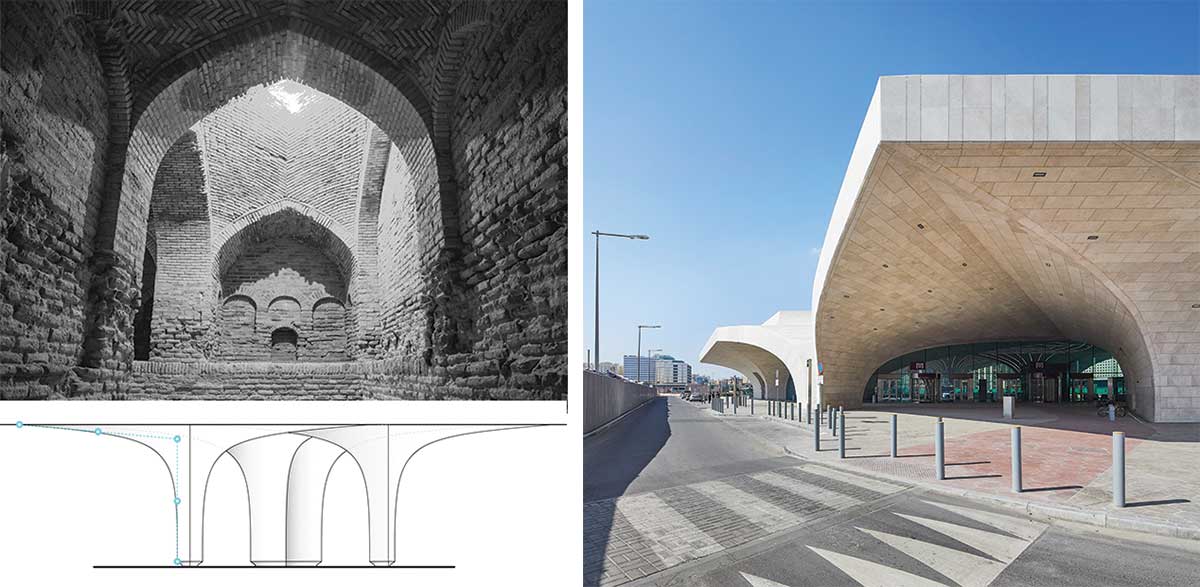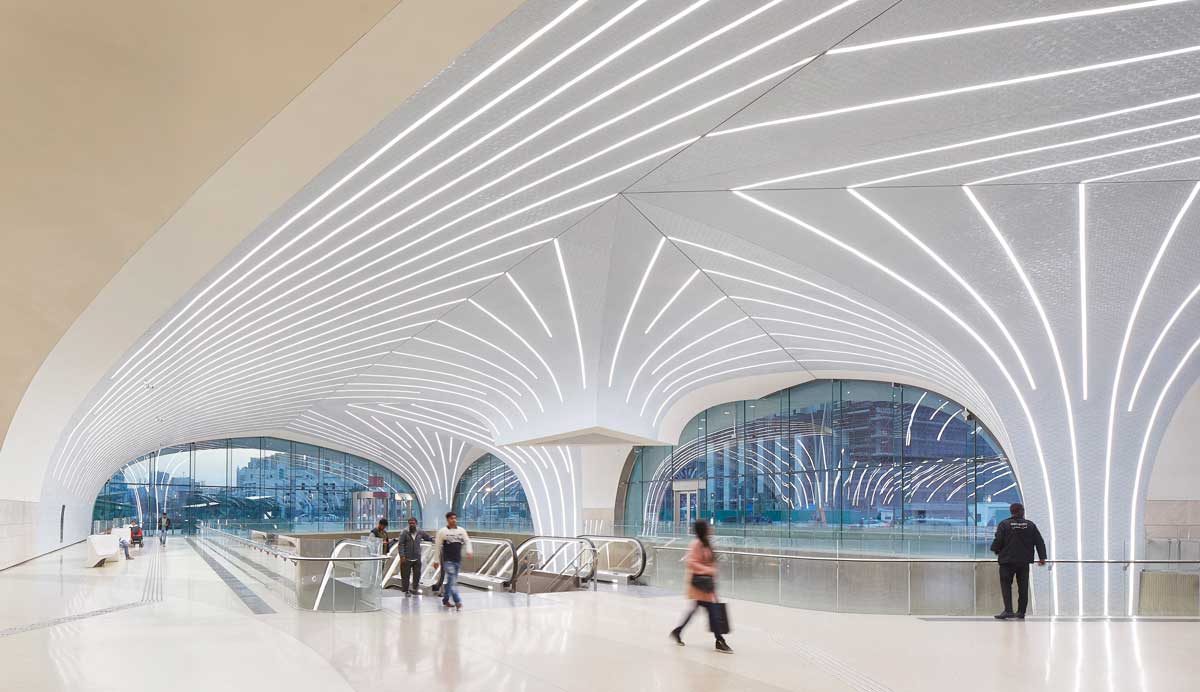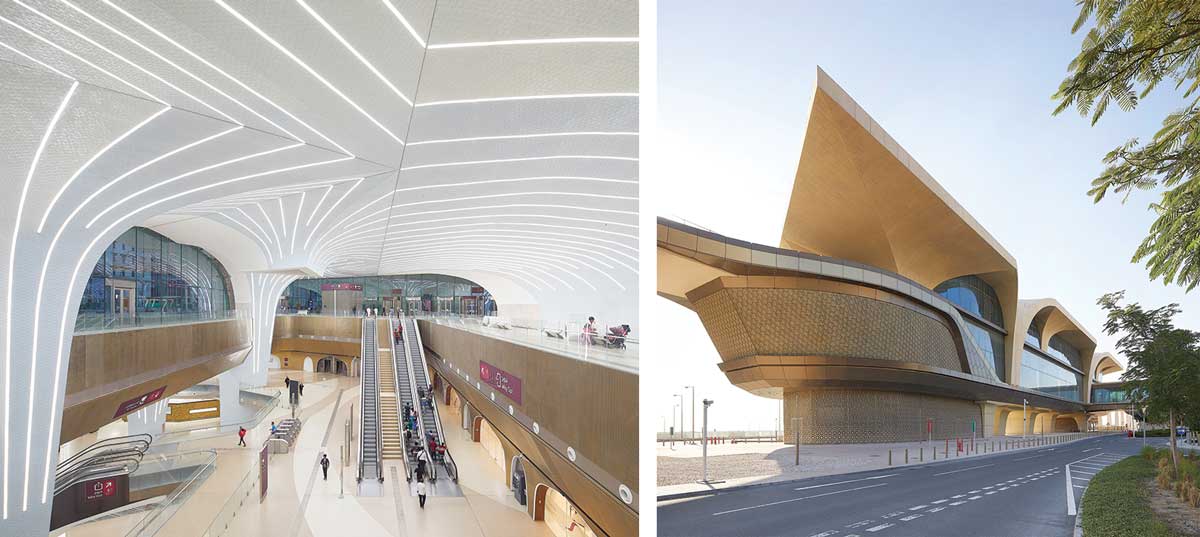
Fact File
Client: Qatar Railways Company
Location: Doha, Qatar
Program: Qatar Integrated Railway Project (QIRP), presently under development by the Qatar Railways Company (RAIL), comprises a complete railway system, consisting of four Metro Lines with approx 30 stations in phase 1 and 40 in phase 2.
Status: Phase 1 completed
Station photos: Hufton+Crow
Diagrams: Designed by UNStudio, © Qatar Railways Company
UNStudio collaborated with the Qatar Rail Architecture Department on the development of an ‘Architectural Branding Manual’ - an extensive set of design guidelines, architectural details and material outlines to assure the spatial quality and identity of the network.
Modular Adaptability
Says Ben van Berkel, “Through the production of a design manual and with the use of adaptive parametric design, it has been possible to create a design with many variants, yet one which maintains a coherent identity throughout all of the stations. In this way, we can combine local contextual differences within an overall identity and parametrically adapt physical factors such as wayfinding, daylight penetration, passenger flows, constructive elements etc. in a complex but extremely disciplined system.”
Through a system of interconnected triangular base forms, the massing of the geometry adapts and transforms to incorporate programmatic functions and to connect interior spaces with exterior urban infrastructure.

Placemaking
One of the key goals of the metro network is to create an efficient and reliable service that encourages the use of public transport. The design of the stations makes use of urban design principles to create public spaces that enhance the urban experience at the pedestrian scale. Furthermore, the creation of a strong station identity creates instant recognition at busy road intersections. The new network also provides safe passage across busy road intersections that serve not only the metro users, but the population at large.

Caravanserai
UNStudio’s concept design draws inspiration from the regional architectural lexicon, whilst simultaneously representing a vision of modernisation and preservation. Referencing the notion of Caravanserais - which were inns with enclosed courts that served as gathering and resting places on ancient trade routes - and following in the lineage of historic train palaces, the design generates social interaction and propagates place creation over space creation.
Vaulted Spaces
Building upon existing elements found in the architecture of the region, the Vault represents a new referential bridge between the region’s historic architecture and culture and its future as a beacon of innovation and prosperity. Drawing inspiration from the arch, expressions of traditional architecture, the lightness of the dhow sail, and the tensile profiles of nomadic tents, the Vaulted Spaces design proposes a contemporary approach to the interpretation and structural implementation of these references.

Interiors
The materialisation principles are experienced through a duality of a pure, modest exterior versus a rich, illuminated mother of pearl effect interior. The exteriors reference the monolithic strength of old Qatari architecture, while the interior spaces create a radiant effect of movement and fluidity.
The use of this uniquely Qatari ornamentation and material palette assists in dividing the large interior spaces and guiding pedestrians towards the transient spaces. The integrated light lines amplify the experience, function as natural wayfinding elements and contribute to a unique ambience for the Metro Network.
Ben van Berkel: “We devised an adaptive parametric system which creates open, light and welcoming interiors for each of the individual stations. Traditional Qatari architectural features are reinterpreted to incorporate new, transformative qualities which capture daylight and direct it into the interiors.”
Scales of Identity
A key concept within the design is one of creating varying scales of identity for the user: network identity, line identity and station identity. The design further incorporates and integrates all functional and technical aspects of the stations and network into a coherent architectural expression.















